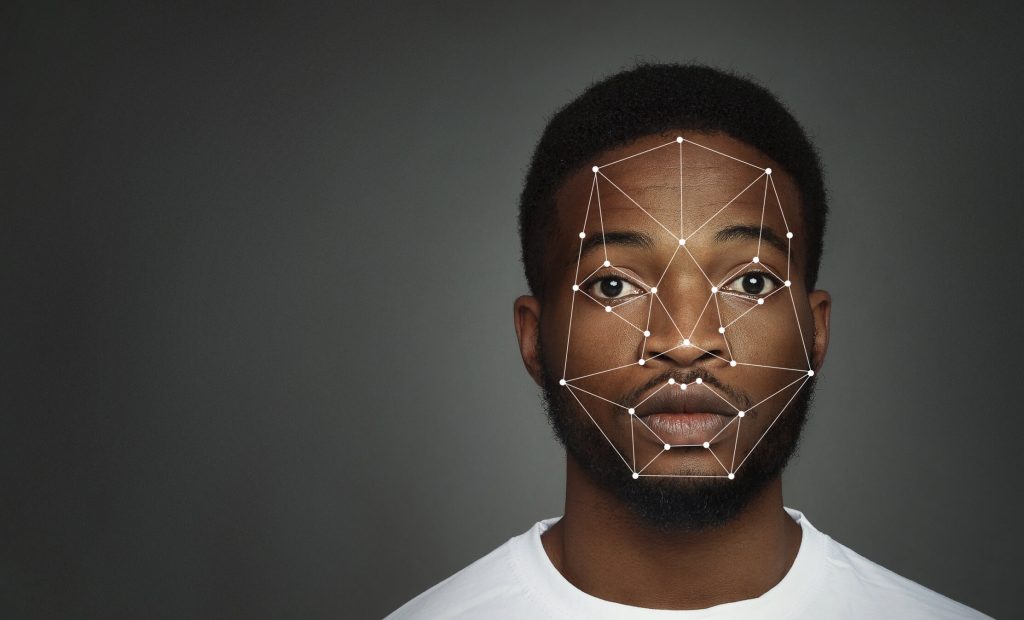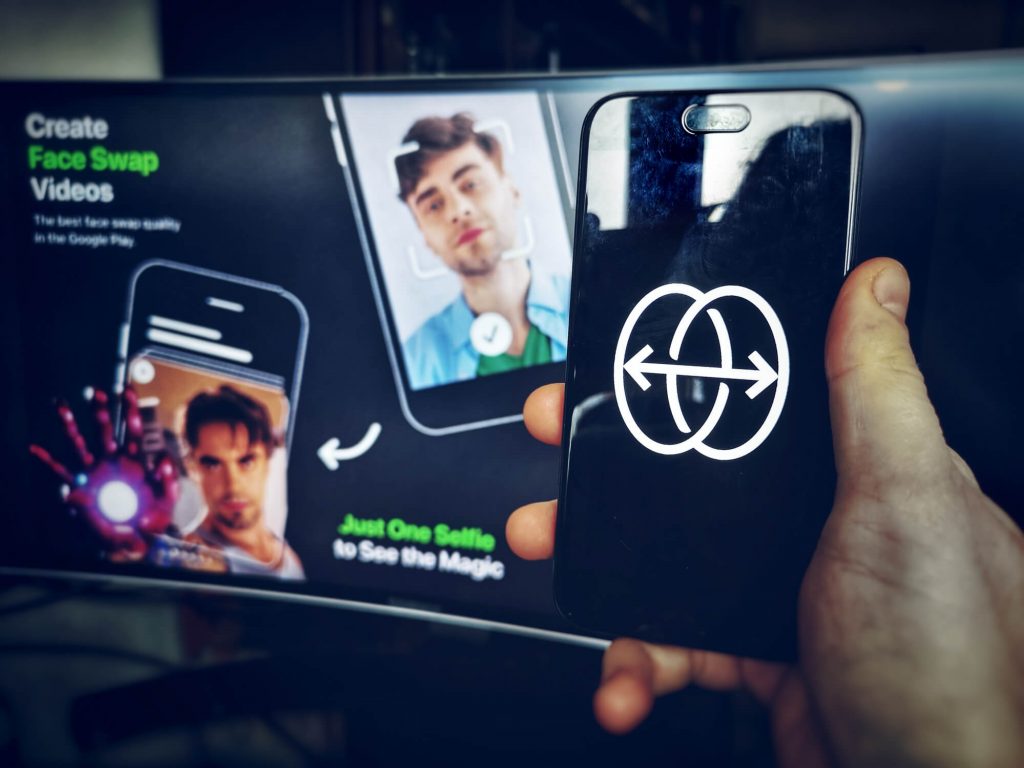Mel is our Partner Strategy & Delivery Manager and also a CIM Chartered Marketer, a testament to her commitment to excellence in the field. But Mel’s contributions don’t stop at the office door. Beyond her professional endeavours, she leads an active life as a qualified run leader and dedicated volunteer. Her experience in these roles has streamlined her leadership and teamwork skills, making her an invaluable asset when it comes to collaborating on projects and ensuring their success. Her sharp insights, strategic thinking, and knowledge have made her a backbone in our team’s ability to drive results for clients in this industry. Mel will make sure that we can approach marketing challenges from all angles and deliver outstanding results for our clients.
Posted on 12/08/2022 by Melanie Comerford
How Deepfakes Are Changing Digital Marketing
A deep what? As you know, computers and all associated technologies have advanced exponentially over the last couple of decades. This evolution has brought positive and negative changes to our everyday lives. We’re better connected with those around us whilst at the same time, we’re completely disconnected from everything.
Professionally, these technological advances were the catalyst that essentially paved the foundation of our careers in digital marketing. They prompted the seismic shift from traditional marketing tactics to near-exclusively digital. Even today, our strategies are often guided or influenced by the biggest developments in tech.
Over the years, new technology has introduced new opportunities and challenges for us marketers to utilise or tackle. 2022 has been no exception, it welcomed the growth of the metaverse to the explosion in the influencer market.
Whilst deepfakes are not necessarily new to 2022, monthly search volumes and the latest press articles suggest interest in the technology has sky-rocketed this year. You might be wondering why this should mean anything to you as a marketer, well we’re here to tell you. In this article, we’ll be outlining exactly what a deepfake is, exploring its evolution over time and identifying some of the ways you could utilise its power in your marketing.
What is a Deepfake?
Deepfakes are a type of synthetic media. Deepfakes utilise a form of artificial intelligence called ‘deep learning’ to make images and videos of imitated events. The process of cropping and manipulating media isn’t a novel concept, it’s been around for years, but deepfakes are much more advanced. It’s essentially a huge step up from the photoshopped media that circulates in fake news.
Deepfakes utilise the power of modern technology, leveraging powerful techniques that include machine learning models and artificial intelligence to generate multimedia content that is more deceiving than anything we’ve seen before.

The most advanced deepfakes utilise an autoencoder, which is a deep learning AI program that is tasked with studying various video clips to build a broader understanding of what that person would look like from various angles and in various environments. The study source is then mapped onto the target within a video.
Other methods utilise a different type of machine learning, known as Generative Adversarial Networks (GANs). A GAN is used to identify and enhance any flaws in deepfakes to reduce detection and make it more challenging to decode. In short, deepfakes are crafted using very sophisticated technology that could be harmful in the wrong hands.
What are Deepfakes for? The good, the bad, the ugly.
The purpose of a deepfake is arguably determined by its creator, some of these reasons could be light-hearted and others may serve a more sinister purpose. Deepfakes first garnered widespread attention for their uses in manipulating pornography.
In 2019, Deeptrace the AI firm identified 15,000 deepfake videos, of which 96% of these were pornographic. This research ensued an increasing concern that it could spread beyond the celebrity world and fuel abuse such as ‘revenge porn’.
As the momentum of deepfakes steadily increases, cybercriminals are also leveraging the technology to impersonate faces and voices to commit fraudulent activities and attacks. A report from late last year found that deepfake attacks had increased by 43% since 2019 with those numbers anticipated to climb. Deepfake technology is also being used to create pretty convincing fictional characters too, with many non-existent users cropping up across various social media channels.
With all of that said, it’s not all bad! Deepfake media continues to amuse users online. Deepfakes have become increasingly prominent in the mainstream media too, including the film industry and news broadcasts. A notable example of its other uses was in the Star Wars franchise, within which they brought actress Carrie Fisher back to life.
Deepfakes demonstrate an evolution of various creative processes across various content-related industries from artists, filmmakers, fashion designers and, believe it or not, marketers!
Deepfake technology is probably closer to home than you might think too. Have you ever used a face-swapping app on your smart device? If you said yes, then you’ve engaged with deepfake tech yourself. Face swapping software harnesses the same technology.

How Could Deepfakes Impact Marketing?
As we’ve pointed out already, deepfakes and deep learning technology have rightly received a lot of negative press, with some referring to the tech as a propaganda weapon. However, is there an opportunity for it to bring some good to our world? Yes. If we were to evaluate all of our modern technology, we would ultimately uncover a list of pros and cons for every channel or software we use every day. Deep learning technology is no exception.
The deepfake concept isn’t entirely new to our industry. We’ve been combining the power of artificial intelligence and marketing for years. As a marketing tool, marketers can use deepfake technology for good. In fact, some of the biggest and most-established brands are experimenting with deepfakes, exploring how they can create unique and engaging content.
As deepfakes begin to surface out of the darker corners of the internet, tech experts have predicted the positive applications they could have for brands and marketers alike.
Deepfakes offer a significant opportunity for experiential marketing. Similarly to the metaverse and its subsidiaries, deepfake technology also brings experiential experiences online, directly to the consumer.
Examples of Deepfakes in Marketing
Below we’ve outlined a couple of examples of how brands are utilising the power of synthesised media to increase the rate of production, reduce costs and improve the personalisation of their content.
Malaria Must Die
A great example of deepfake technology being used to empower digital marketers is the Malaria Must Die campaign, featuring David Beckham. The global campaign, which actually debuted in 2019, was created to help raise awareness for the deadly disease. How the campaign was actually created is the particularly interesting part.
As you may know, video marketing is notoriously difficult to scale. Once a project has been filmed, edited and produced, it’s unlikely that the content can then be edited or translated for other purposes. This is where the magic of innovation came in.
The creative team recognised that generating a semi or fully artificial video would be more efficient. The startup company, Synthesia; said it could reduce the need to produce more video content by editing existing assets to create international and personalised videos.
This enabled the production team to increase their video output tenfold for a fraction of the cost of conventional production. Since then, Synthesia says it has concrete ethical guidelines and acknowledges the responsibility they have with providing this calibre of technology to the world.
Deep learning and artificial intelligence are very powerful tools that are groundbreaking for marketers when used for good. Deepfakes can enable fashion brands to show outfits on a broader variety of models, with different skin tones, heights and sizes. Why is this important in relation to marketing? Because when consumers see products as extensions of themselves, they are willing to buy more.
Though as our example highlights, this approach is not exclusive to just the fashion markets. In addition to making the ads more personable, deep learning technology can generate ads that use location data to localise advertisements. For example, take one piece of video creative, with deep learning it can then manipulate the content so that the star/voiceover speaks in their local language, reference local attractions and much more.
Hyper-personalised campaigns such as this one, evoke customer engagement, loyalty and ultimately revenue. Over time, analytics will help you identify unique trends and behavioural patterns that will inform the future of your marketing campaigns.
Resurrecting Salvador Dali
The Dalí Museum in St Petersburg, Florida used a type of deep learning technology to bring back the “master of surrealism” back to life. The experiential video installation includes a moustachioed deepfake Dalí greeting visitors from multiple screens and engaging in a short interaction with them.
The video was comprised of a mix of genuine Dalí quotes and invented present-day commentary and ends by turning around, taking out a smartphone and snapping a group selfie with his audience.
The museum director said “What Dalí Lives adds is a sense of emotion. If visitors can empathise with this man as a human being, then they can relate to his works much more directly and much more passionately.” The Dalí Museum is another great example of brands borrowing the technology for a light-hearted purpose to generate beneficial commercial results.
AI-powered holographic entertainment is growing, we’re increasingly seeing more mainstream occurrences. Deep learning technology has been used to recreate late celebrities such as Whitney Houston, Michael Jackson and various other stars. Arguably, public opinion is split by this. Some of the population find it uncomfortable whilst others are fascinated.
Nevertheless, it doesn’t stray away from the fact that deepfakes can serve to delight audiences and create content that has consumers flocking. We anticipate hyper-real experiences will continue to grow, generating buzz and engagement for brands, products and services worldwide.
Should you use Deepfakes in Marketing?
So is it really ethical to consider using deepfakes or synthesised media in your marketing strategy? Well, let’s put it this way, is it considered ethical to utilise consumer and behaviour data to provide promote your product or services? Technology is not the source of all evil.
Many scientists and academics have been rewarded for their contribution to the sophisticated algorithms that grant us the ability to create targetted advertising. Throughout the years we’ve been empowered by technology, and have proven time and time again how it can be used for good. However, as with everything we do, brands, agencies and corporations have to acknowledge their own responsibilities to carry out their own marketing initiatives ethically.
The Benefits of Deepfakes in Marketing
Though the majority of marketers are still in the very early stages of experimenting with deepfakes and technology, many are unlocking the potential of conveying more immersive marketing experiences. The benefits of utilising deepfake technology and synthesised media in marketing are broken down into three key areas:
Lower Cost than Conventional Video Marketing
Marketers can reduce their reliance on talent and in-person actors, often the biggest expenditure for any video marketing campaign. This new approach to video marketing enables brands and marketers to purchase a license for a person’s identity. Using previously created recordings and adding their own dialogue to create the footage they need.
Once the footage has been created, it can then be changed, chopped and manipulated for future campaigns. This enables marketers like you to continue to produce high-quality content, long after the raw footage is captured. The possibilities are somewhat endless and this will have a dramatic effect on your production costs.
More Personalised Content
We’ve touched on the importance of hyper-personalisation within this blog already. When you pair deepfake technology with marketing, brands can convey more relevant messaging and experiences to their customers.
This can apply to a variety of demographical information too. From likeness to geo-locations; changing the visual appearance of models and adapting languages to suit the global market. This technology will undoubtedly help brands increase inclusivity and help reach broader audiences.
Repurposing and Redistribution
This point links with the overall lowering of costs. As in-person actors are not a requirement for deepfakes, marketers have the ability to simply repackage and repurpose content for a variety of marketing campaigns.
Omnichannel campaigns can be painstakingly difficult to plan and execute successfully. With deep learning, you can edit your content to accommodate various types of different media. From social media to radio advertising, synthetic media covers it all.
The Future of Deepfakes
With the increased saturation of deepfake media and its technology, it’s not difficult to understand why many people are sceptical or scared of it becoming mainstream. Amongst some of its biggest drawbacks, modern consumers are predominantly worried about their ability to distinguish what is real and fake.
In 2022, technology and cybersecurity representatives from all across the globe are warning about the future of deepfakes and other similar technologies. Many have warned that as tech continues to evolve, deepfakes will become virtually impossible to identify.
However, as we’ve rightly acknowledged throughout this article, this technology shouldn’t be defined by its controversial conception. As the tools continue to evolve, more and more brands, marketers and organisations have demonstrated the positive possibilities they can have for consumers and businesses alike.
To summarise, the ethical implications of deepfakes are yet to be fully explored, as is the same for other emerging technologies. Marketers and brands have the opportunity to responsibly use this technology to serve customer needs and demands through legitimate and safe use. As ambassadors for our industry, you and I must ensure that the tools we use are being used ethically.
One thing is for sure though, deepfakes are here to stay and we expect to see them continue their mainstream trajectory in the coming months.
Content Marketing at Loop Digital
High-quality content like deepfakes will continue to play an integral role in what we do, we recognise that the planning, delivery and execution of omnichannel campaigns can be daunting. At Loop Digital, we have a team of content specialists that can help build your brand awareness, secure conversions and grow your business.
For more information about how we can help, explore our content marketing services or reach out to a member of our team today.
To learn more about content marketing, you can download our Essential Guide to Content Marketing here.

Looking for your next opportunity?
Digital marketing careers
We’re always on the lookout for talented individuals to join our ever growing team. If you think you’d be a great match for Loop Digital, we’d love to hear from you.

Join 300+ business owners getting weekly growth strategies - subscribe now.
"*" indicates required fields







